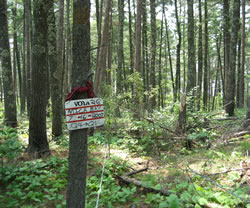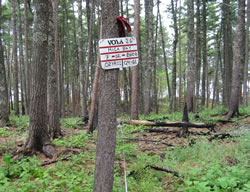
National Fire Plan Success Story
Park Works to Restore Mixed Pine Forests Using Mid-Summer Prescribed Fires
Voyageurs National Park, Minnesota
National Fire Plan - Rehabilitation
2010

Conditions immediately prior to growing season burning in 2007.

Conditions one year after 2007 burn.
Turn of the century logging and recent fire suppression reduced the coverage of red and white pine forests across much of Minnesota. These activities brought about the conversion of this forest type to hardwood forests, mainly dominated by aspen. Less than 2% of the original pine forests now remain.
The fire program at Voyageurs National Park is working to restore and perpetuate the remaining pine stands using multiple mid-summer prescribed fires. Typically, prescribed fires are conducted in the spring in northern Minnesota, which successfully results in mortality of balsam fir and top-kill of red maple and various tall shrubs. Unfortunately, subsequent shrub and maple re-sprouts are vigorous, often leading to thickets more dense than pre-burn. Additionally, heat penetrating the soil and consumption of the duff layer is minimal making pine regeneration and germination of the seed bank difficult. The park decided to experiment with growing season burns to attain better results. Growing season burns tend to have better success by top-killing trees and shrubs while they are actively growing, making re-sprouting less vigorous or killing the plants outright. Soil heat penetration and duff consumption are greater since duff moisture tends to be relatively low.
During July 2007, the park conducted its first mid-summer burns on several islands and one mainland unit. The fires burned slowly at first on some of the brushier sites, due to the leaf-on conditions that create a humid understory environment. However, over the following weeks as conditions became drier, the fires slowly made their way across the sites. These fires were greatly successful at consuming and reducing dense stands of brush and preparing seedbeds. As of 2010, several of the stands were regenerating in the open conditions, while others were maintained in their present state by suspending succession. Several stands experienced a flush of new understory species as the seed bank awakened.
Contact: Scott Weyenberg, Fire Ecologist, Great Lakes Eco-region, (715) 483-2285.